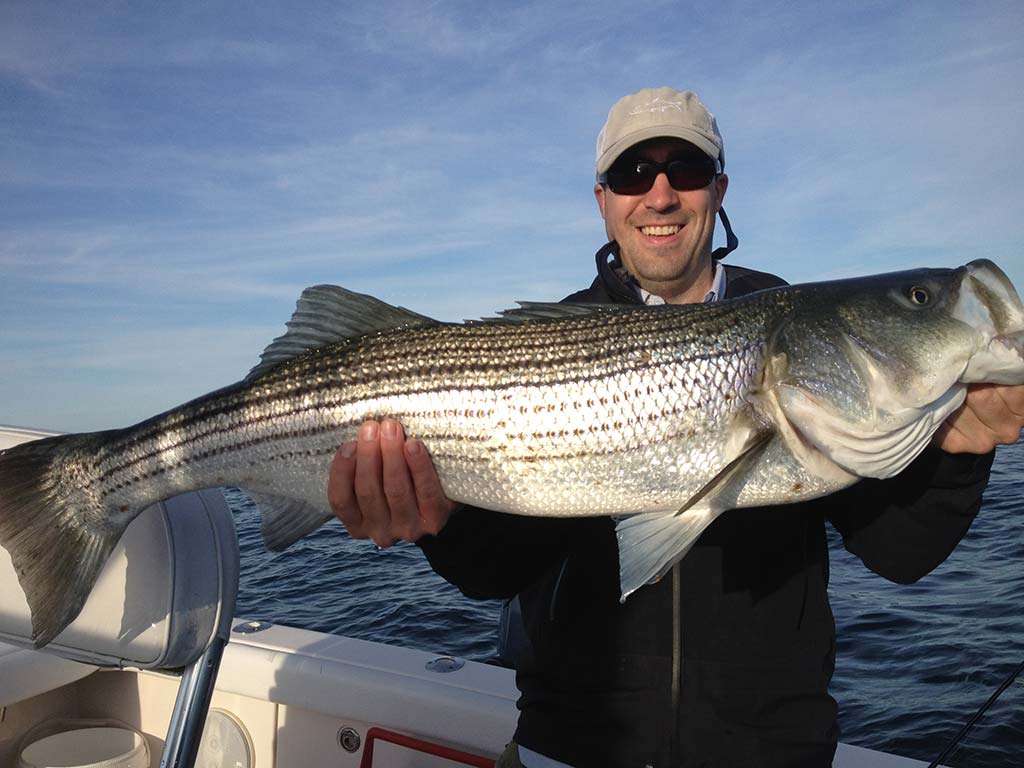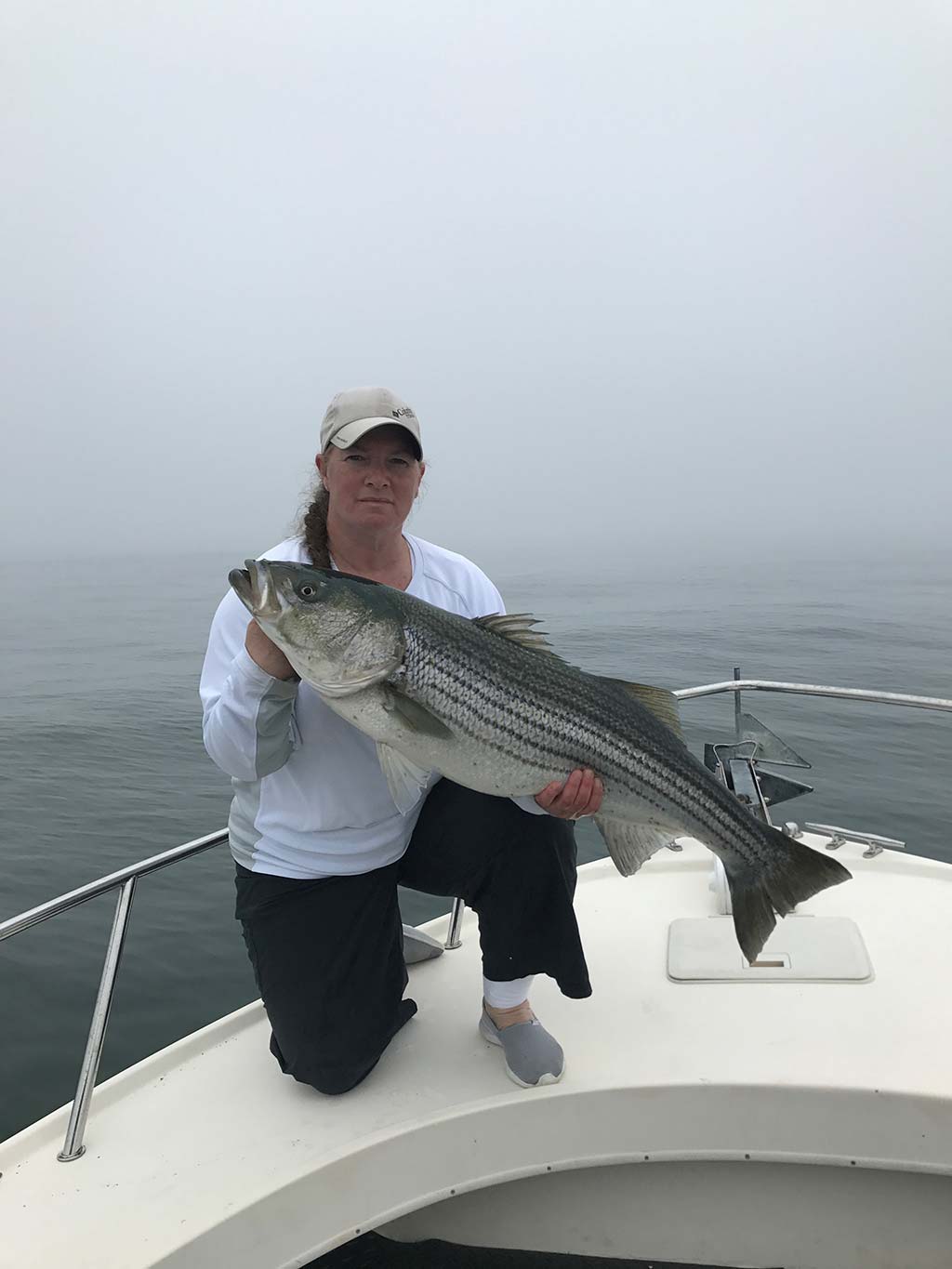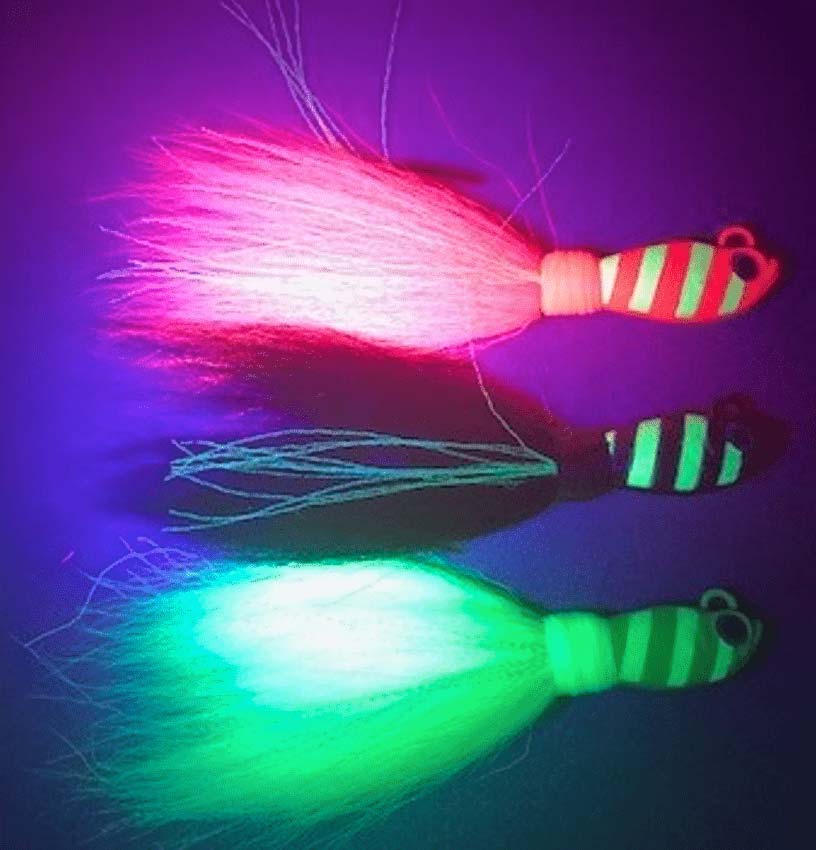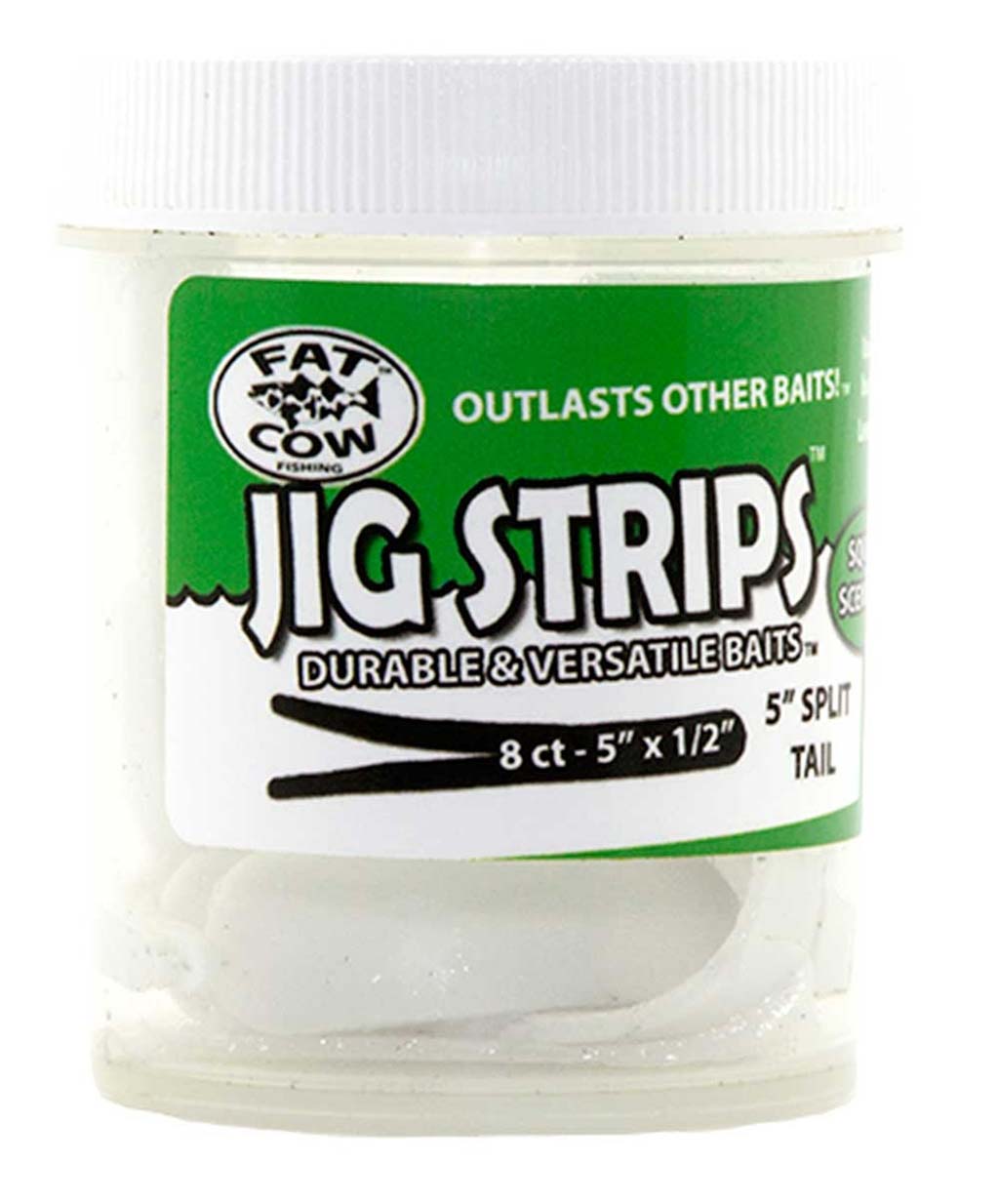
The Race provides significant and diverse habitat for all species
The months of June and July have been long known for producing mammoth striped bass on Long Island’s East End. Granted the past three seasons have seen exceptional bass fishing in both size and quantity within close sight of the Montauk Lighthouse. However, for decades the waters of The Race have consistently produce giant bass in this challenging passage and I highly doubt 2021 will be any different.
Welcome To The Race
Situated between Little Gull and Fishers Island, east of Orient Point, The Race is a 3-mile-wide deep-water channel, which is the primary area of tidal exchange between the waters of Long Island Sound and Block Island Sound. It shares this duty with Plum Gut, another waterway further west situated between Orient Point and Plum Island. The bottom contour in the Race is similar to a roller coaster in an amusement park. Underwater hills with depths that vary from 17 feet on the shoals at Valiant Rock, to nearly 300 feet along the gullies. Most of the bottom and ledges consist of rocks. Some of which are the size of houses. However, the area is also home to several unmarked wrecks that are scattered along the bottom.
The combination of rocky bottom, deep turbulent waters, and shallow shoals of The Race provides significant and diverse habitat for all kinds of species, especially stripers and blues. Blackfish, sea bass, porgies, and many other species of structure-reliant forage fish reside here providing plenty of eats for the gamesters. Due to the massive amount of water that flows through this waterway, currents often push over 4 or 5 knots. When conditions such as wind against the tide exist, the shoals in The Race can become quite chaotic as breaking waves and steep chop can make for some undesirable conditions, especially for smaller boats as the strong currents pass over them.

Rock Around The Clock
During June and July, stripers are responsive to baits and lures during the day as well as during the night tides. However, as the dog days of summer arrive with intense heat and heavy boat traffic, the elements convince the bass to do much of their munching toward the more tranquil hours of night. I strongly advise that nighttime navigating should be left to the experienced captains of the open and charter boats from nearby Orient Point and Montauk. Most of these boats run six-packs and rest assured that the boats advertising in The Fisherman Magazine mean business when it comes to catching fish for their clients. I can assure you these skippers and crew dupe bass every night and work their tails off to put fish in the boat.
Keep in mind many of the largest bass of the season from the Race are usually taken during the full moon and an outgoing tide. Therefore you may want to consider booking a night trip soon to coincide with the two factors. Quite often these boats are not alone as open, charter, and private boats from Connecticut and as far as Rhode Island will join in The Race for their share of the bounty.
Tough Terrain, Tough Tackle
Enormous hills of boulders and strong currents are going to require some stout tackle. Should you decide on jumping on a charter or open boat, no worries as they supply all the necessary tackle to handle the elements. Most open boats charge a $5 or $10 rod and reel rental fee, while all tackle is included in the price of a charter. Should you decide to fish on your own, conventional outfits in the 30- to 50-pound class are best suited to deal with the fast drifts and rough bottom. The best results will come from rods with fast taper tips for sensitivity, and powerful butt tapers for the lift required to haul any outsized stripers from this wonderland of the sea.
My favorite combo which suits the situation perfectly is the 7-foot Lamiglas TFX7040CT Tri-Flex Series. The exclusive graphite/fiberglass construction of this stick gives me all the sensitivity and power I need to challenge the toughest of bottom lairs. I match the rods perfectly with the Daiwa SL-X30SHA Sealine conventional reel with the power and speed at a 6 to 1 ratio to minimize the number of lost rigs and sinkers while drifting over hilly grounds. Power Pro 50-pound braid completes the combos as this form of braided synthetic is sensitive to the slightest touch which is needed when fishing this body of water. For sinkers, the size will vary depending on the given conditions at the time. On average, 12- to 16-ounces of lead will keep in touch with the bottom. However, there will be times when you can go lighter or heavier. Therefore if you plan to fish on a private vessel, don’t leave the dock without an assortment of bank or cannonball sinkers between 6 and 24 ounces to cover the bases. Make sure to have a good supply of lead as it will be inevitable that a few will succumb to the merciless bottom. If you charter a six-pack, the sinkers are included in the price of the charter.

Three’s Company
There are many tactics and methods out there that have their times in The Race, however, the 3-way rig is the most commonly employed and has certainly stood the test of time. The rig is simple, and it can be fished with live bait or artificial lures such as bucktails and swim shads. Starting at the mainline tie an 8-foot shock leader of 80-pound monofilament or fluorocarbon via an Albright Knot to the braided mainline. Tie the end of the leader via an Improved Clinch Knot to the top ring of the swivel. The center eye is reserved for your main leader which should be a 6-foot length of either 60-pound test mono or fluorocarbon where you can tie either a 3-ounce bucktail for jigging or a 7/0 circle hook via a Palomar Knot for live bait such as eels or legal-size porgies. The lower ring of the swivel rounds out the rig by tying an 18- to 24-inch leader of 60-pound monofilament for a sinker via a Surgeon Loop.
Tails, Slime & Scales
Drifting live eels on the 3-ways is the most common and effective method used during the nighttime hours. However, if you plan on making a trip on a private boat, you may want to head out an hour or two earlier, bring some clams and porgy rigs and catch a half dozen to a dozen 9- to 11-inch porgies which are bass killers both day or night and usually out-fish the eels. If you’re coming from the ramps at Greenport or Orient Point, the Oyster Bar Reef located in the shallow waters between Orient Point and the Orient Point Lighthouse have loads of small porgies perfectly fit for bass fishing throughout the summer. A couple of solid drifts should get you what you need for fishing the tide. If eels are the preferred bait, be sure to have plenty of extra dry rags on hand since the slime of an eel gets the rag quite slimy after a few uses.
Daytime is bucktail time with the 3-ounce Spro Power Bucktail the best way to go. The Spro Power Bucktails are new with some extraordinary features, which include Zebra glow patterns that attract stripers, special glow material in the skirt, and of course super sharp and super strong Gamakatsu Hooks. The Power Bucktail Jig has a unique head shape and eyelet placement which gives it a natural gliding action. When jigged, its body stays parallel for great jigging action, this makes them ideal for vertical jigging also. Forward and center balanced jigs just don’t seem to cut it in this neck of the woods. Stick with the proven Spro Power Bucktail and make sure to have zebra black, zebra white, zebra crazy chartreuse, and crazy pink all in 3 ounces. Tipping the bucktail with a strip of Fat Cow Jig Strip in a red, black, salmon blaze, or ghost white will catch the attention of the bass and will no doubt be an asset to the jig.

Climbing The Hills
Thousands of years ago during the Ice Age, giant glaciers did a fine job of sculpturing peaks and valleys across the rocky lairs that now make up the contours of The Race. It’s those peaks and valleys that create the current to clash. This sets up the perfect opportunity for stripers waiting to ambush feeble baitfish that get caught up in these turbulent rips. To fish these rips properly you need to set your drifts to come up the hills. Pay attention to your recorder and look for life right along these ledges. Countless hills hold strong potential at different depths. I suggest that you start your drifts between 95- and 110-feet of water as anything deeper rarely produces bass.
As you work up the hill it is most relevant to retrieve the slack on your line and additionally crank your reel three turns to keep the sinker from hitting the bottom, otherwise, you’ll be donating a whole lot of terminal tackle and precious bait. The key is to keep your rig six feet from touching the bottom. Don’t worry that it may be too far off the bottom. Bass will find it as they have great sight both day and night at long distances. Work up the hill until you reach the top as it flattens out. The peaks can run up 50 feet to as much as 17 feet. The bass can be anywhere from the bottom to top, therefore, you must always be ready to strike. Keep in mind the higher the peak, the stronger the current. Keep watch of the GPS for reference points once you hook a fish so you can repeat the same drift time and again by first hitting the MOB button.
Pick Your Days
A hard blow and a hard current clashing together can make for some undesirable chop and white water in this area. In layman’s terms, it can be downright nasty. This is especially true with low barometric pressure which is usually accompanied by east or northeasterly wind. Although many people wouldn’t dream of fishing in the cold wind and rain, snotty weather is usually when the bass go on a binge, especially the first 24 hours of the front. This condition usually spells a no-go for small craft anglers. Remember that safety must always come first. Besides, bass will bite, particularly on an outgoing tide on nice days while the barometer is normal. Thank goodness that most days and nights from June to August have nice weather and calm seas. Make sure to check before heading out, especially because thunderstorms can creep up on you during this season.
Anglers targeting The Race can easily trailer their boats from up island and be fishing within minutes of the ramp. Remember good navigation maps and good electronics are the keys to navigating in the area safely. Better yet as mentioned before, consider grabbing a few friends and put together a charter from one of the fine charter boats from nearby Orient Point or Montauk. Either way, make sure to bring the camera, you just may catch that bass of a lifetime.





